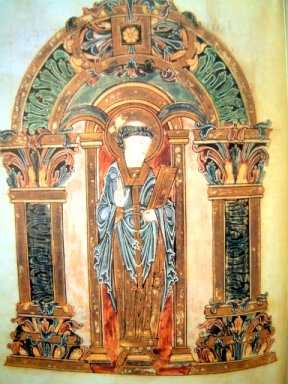
St Swithun from the Benedictional of St Aethelwold, 10th century.
Swithun, or Swithin, was bishop of Winchester from 852 until his death in 863. And that is just about all that is known about him for sure. Nevertheless, a great number of legends have grown up around him, and, before the martyrdom of Thomas Becket, his tomb in Winchester was almost certainly the premier pilgrimage destination in England.
The legends are largely concerned with the miracles claimed to have been performed by Swithun. These are detailed in depth in Aelfric's Lives of the Saints, written by Abbot Aelfric of Eynsham between 990 and 1002. We'll look at some of these a little later.
It is said that Swithun was a humble man. He asked that he would not be buried in grandeur inside the cathedral, (then the early building known as the Old Minster) but in the open air where people would walk on his grave and the rain would fall on it.
A hundred years later the then bishop, Aethelwold, rededicated the cathedral to Swithun, and a reputation for miracle working led to his canonisation. It has been suggested that this was part of a scheme by Aethelwold to promote and support his not entirely popular monastic reforms. in 971 remains were moved into the Old Minster and a shrine was created to serve as a focus for visiting pilgrims. It was certainly a success; legend has it that the minster was full of discarded crutches belonging to those cured by Swithun.
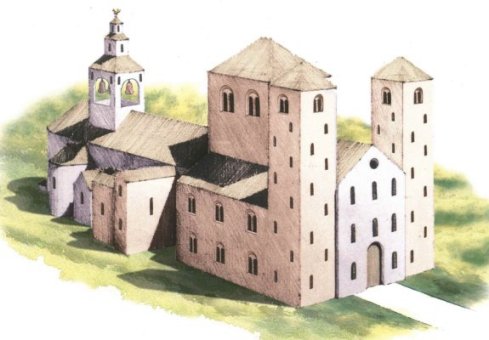
A reconstruction of Old Minster
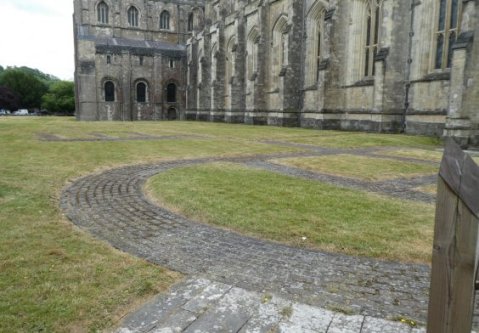
The site of Old Minster today, north side of Winchester cathedral.
In the 11th century building started on the new Norman cathedral, and Swithun's relics were moved to to a location behind the high altar. This wall painting found in Winchester Cathedral is said to show the shrine as it appeared then.
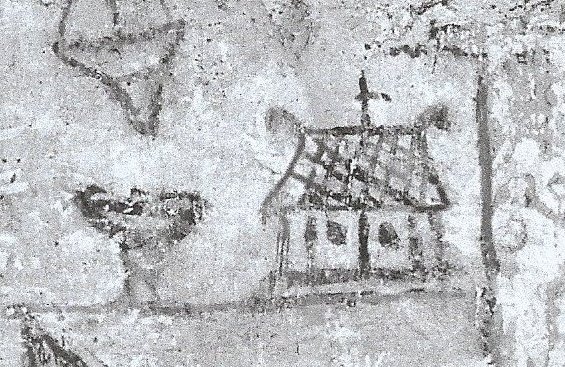
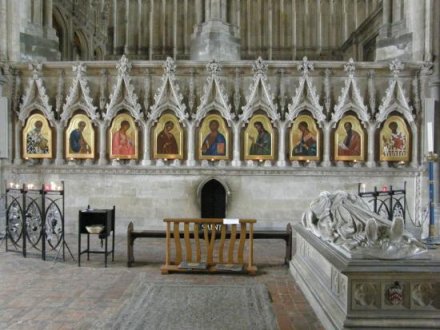
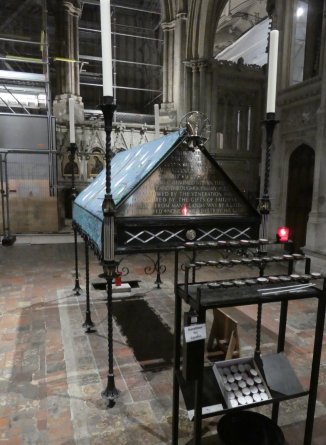
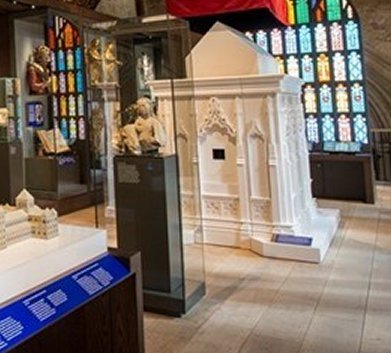
Home page: explore the site